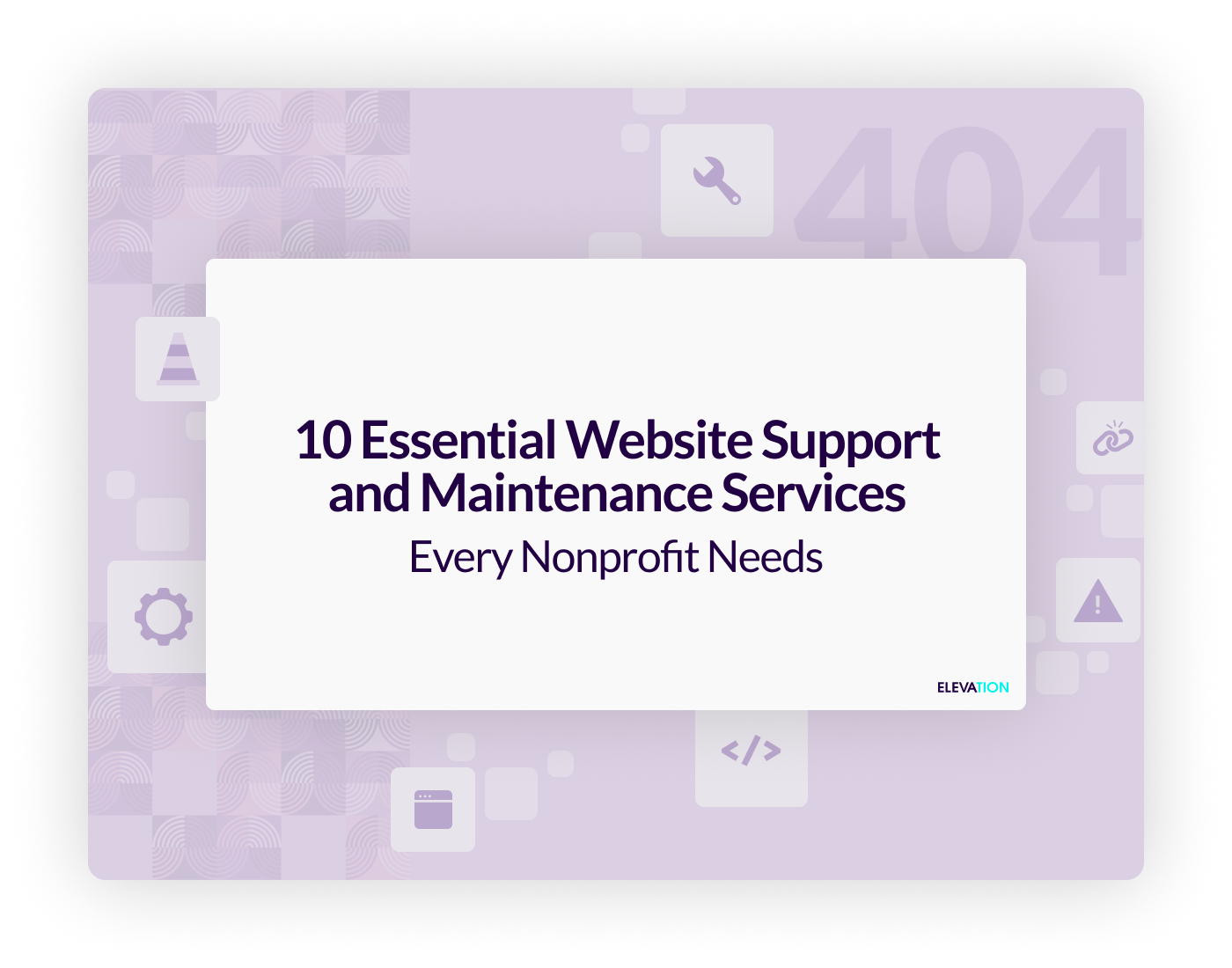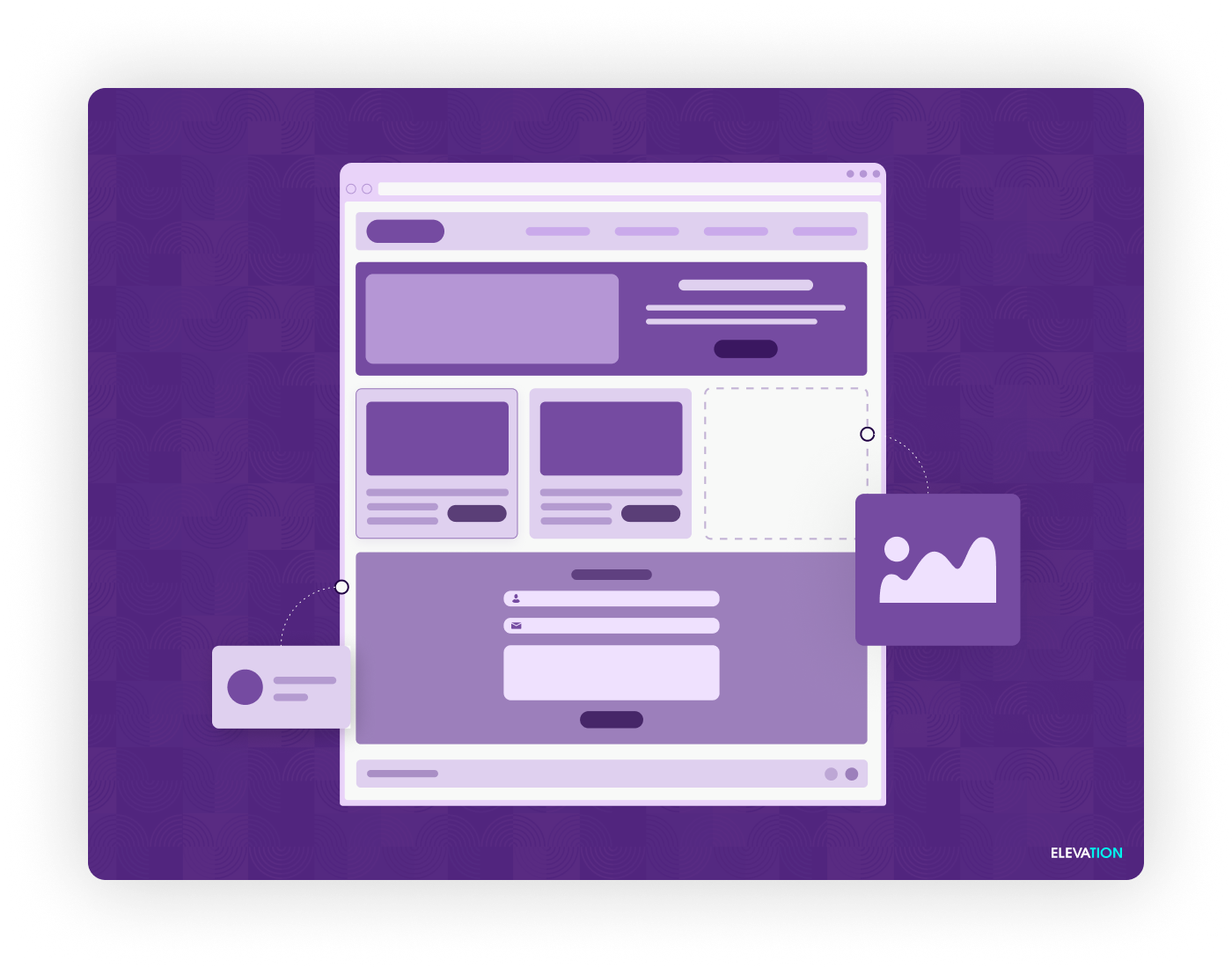Website maintenance. The task that’s on our calendar every week, every month, every quarter, and every year. But how often do you say, I’ll get to that tomorrow? When it feels like such a giant task to overcome, it’s easy to push it off. But like all big projects, we just need to break it down. So let’s do just that.
Think about your nonprofit website like your car: it needs different levels of regular, occasional, and annual maintenance to ensure passenger safety and optimal enjoyment. As your vehicle to success, your website needs just as much TLC as your car! This includes regular fixes like oil changes every 3,000 miles. It also requires occasional check-ups on the air and fuel filters. And annually, you should get your battery, power steering fluid, and brakes looked at too.
Perhaps you are reading this now and coming to a halting realization that you should bring your car into the mechanic after work! This level of urgency is exactly how you should feel when evaluating your website. We sometimes push off recommended maintenance as a non-priority, but one day we look up and realize that we said tomorrow a month ago. Maintaining both cars and websites can be quite tedious and draining, however, the healthier your car or website is, the happier and more successful all the passengers or users will be.
Find a printable/savable/sharable version of our handy schedule from this infographic!
Weekly
1. Run site backups
We never anticipate our items to get stolen or our car to stop working. But when it does: boy, do we wish we had insurance! Running site back-ups every time you update your website will guarantee that things run “business as usual” if your original website suddenly stops working for any reason. You should run site backups every time you adjust your website, but make sure it’s at least once a week.
2. Do a quick run-through
Browse quickly through your website to make sure all pages are loading properly and quickly. If you notice anything is wrong, reach out to your website support team. Get any broken links fixed, and redirect any 404 errors.
3. Update and add new content
Google likes to see up to date content. Make sure to change out any banners from past events or campaigns with the new graphics, update your upcoming events section, add new calendar events, and adjust your copy. Also, post and share a weekly blog article.
4. Allow for user input and respond accordingly
When users give you feedback on your website/blog posts/other features, don’t just listen to them: respond back! This increases user confidence in your company and encourages them to return. You should check forms, comment pages, and survey results weekly for comments and respond verbally. Be sure to consider the changes they suggest as well. Also remember to delete any spam comments and form submissions, so your site stays clean and credible.
5. Check new content for responsiveness to varying browsers and devices
When I grew up (in the early 2000s), my family had a shared desktop computer in an office. Us kids would switch off every hour to complete our homework and play internet games. Now, kids as early as 10 years old walk around with smartphones, tablets, and laptops! To cater to diverse internet users, it’s important to assess your website’s responsiveness to varying browsers and devices. Check any new content you added to your website to make sure it responds well to browsers such as Firefox, Google Chrome, Safari, and more. Also, pull up the website on a phone, laptop, and tablet to ensure it runs smoothly on different devices. If everything appears as you designed it to on all mediums, you will have a better chance of keeping visitors on your page and converting them to constituents.
We all know what it’s like to see a scattered website verses a clean website: we immediately lose interest if the website doesn’t load properly on our device and we’re less likely to visit it again. By checking this weekly, you will keep visitors engaged and coming back for more.
Monthly
1. Update your plugins and Content Management System
While your CMS may update automatically now (which is great for security purposes), manually updating your plugins properly is crucial to your website. Not taking necessary precautions could be entirely counterproductive. While we highly recommend consulting with your technical professional before making any of these updates, here are some precautions you should take:
*Cautions to consider when updating unused plugins:
- Ensure you have backed up your website before: Just in case the update contains coding errors, it’s safe to have a back-up version of your website in store. Although such occurrences are few and far between, better safe than sorry!
- Consider updating plugins one at a time: Perhaps you have identified a handful of plugins that need updating. Instead of trying to update them all together, consider updating them one at a time. As previously stated, rare plugins may not be entirely reliable and may cause damage to your website. By updating them individually, you can clearly identify a faulty plugin if such occasion arises.
- Update plugins during off-peak times: At the off-chance a plugin causes an issue to your website, the last thing you want to do is have it affect one user’s experience, let alone that of many. By strategically planning when to update plugins during a low-traffic time, you will minimize the potential damage while protecting users from website malfunctions.
2. Ensure contact information is up-to-date
Changed business addresses, phone numbers, or emails? Be sure to keep users informed! Check-in with your staff monthly on their contact information and adjust accordingly. You don’t want any communications from your supporters to get lost.
3. Verify all new pages comply with accessibility standards
While many of these checklist items are more or less cosmetic, accessibility is vital to the survival of your website. Between 2017 and 2018, there was a 177% increase in lawsuits against companies that had inaccessible websites to varying degrees. Websites that did not cater to viewers who had disabilities or failed to meet other corresponding regulations found themselves caught in a very preventable situation. On a monthly basis, ensure your website meets updated accessibility guidelines and evaluate its success. Use this handy infographic for your weekly check-ins!
4. Check loading speed is under 3 seconds
Use a free tool such as Google PageSpeed Insights. If your loading speed is over 3 seconds, let your technical professional know immediately. A slow website turns away your visitors and hurts your online visibility, which ultimately means less engagement with your community.
5. Test your donation page
Ensure that it is accepting donations properly. This is pivotal to your nonprofit, so run through the steps on an outside browser to make sure you are collecting all the correct information and all of the data is being processed properly.
Quarterly
1. Review your internal strategy and discard unused plugins
Plugins like Adobe Flash Player and Java are key to keeping your website running smoothly, but outdated/unused plugins can negatively affect your website’s speed and security. Assess which plug-ins you’re actively using to benefit your website weekly and discard the obsolete ones. In doing so, you will improve your ranking on search engines: score! Make sure to check with your technical professional on this one, too. Sometimes we don’t realize a plugin is still in play until it’s deleted.
2. Analyze overall site content
Confirm that this new content is up to the level of quality needed on your site. Is it cohesive with the old content? Check out your graphics and photos to make sure they look cohesive. Sometimes quick fixes that worked in the moment need to be readjusted. Your site should progress every quarter.
3. Do a full site run-through for responsiveness and link checks
Although this takes some manual labor, it’s worth its weight in gold. Check links and images with external links to make sure they’re running smoothly and directing traffic accordingly. In doing so, you are not only improving the honesty of your company’s resources, but you in fact are boosting both your search engine rankings and your website speed. By assessing links and images monthly, you will complete a much-needed clean-up.
Also, make sure it’s running properly on all different browsers for both mobile and desktop. Plugins and updates cause changes. Doing a full run-through on all different platforms will reveal things you otherwise would have missed. Again, check in with your maintenance team if you notice anything is wrong.
YEARLY
1. Optimize your database
There’s no denying how difficult it is to open your closet and determine things that “spark joy” and things you no longer have a use for. Nevertheless, you need to make more space for newer pieces. Take this mentality to your website: yearly, it’s time to clean house. After a year of hard work, your website is chalk-full of meaningful blog posts, links, forms, etc. By clearing out features that are no longer as relevant to users yearly, you freshen-up your database and improve your website speed!
2. Renew your website domain name and CMS subscription.
Keep the payment and username/email/password information in a safe place, especially if your website keeps changing hands for who is in charge.
3. Update copyright date on the website footer
A simple fix to keep things updated!
4. Set goals for next year!
New years are for new beginnings. Perhaps your company has hired new employees with cutting-edge ideas! Maybe your team is reconsidering your complete web design (and if so, we’re here to help!). All in all, you should reflect on how well your website has served users over the past year and evaluate new ways to reach large audiences. Of course, some may say: “if it’s not broken, don’t fix it,” but there’s tremendous value in branching out into newness. As Walt Disney once said, “We keep moving forward, opening new doors, and doing new things, because we’re curious and curiosity keeps leading us down new paths.”
5. Consider a redesign
Sometimes, it’s just time for a fresh look! If your support team is a full-service firm, reach out to them and start planning your new project. If they’re a credible firm, it’s always best to stick with those who know your website inside and out.
If you’re looking for a team, consider a full service firm like Elevation. We specialize in the specific needs of the nonprofit community. Check out our support plans here.
For a way to visualize this information, check out our infographic on the ideal Website Maintenance Schedule!




